
Guerrilla Growing
Guerrilla growing is the art of growing weed on property that is not yours, whether that’s a national park or farmer’s field, it may be the only option. We will outline a few things to consider before you start, with advice on how to choose a location, what security measures to take, what to do about your harvest and the dangers a guerrilla grower may face.
Choosing the best location for guerrilla growing
When looking for a place to guerrilla grow there are four important factors to consider:
1) Location and Security – Go for a location with restricted public access and is away from any recreation. Find a site that is unlikely to be used by others.
2) Water supply – Water is an essential ingredient for marijuana growing. If you can’t rely on rainfall, a decent water supply nearby is a useful resource.
3) Sun coverage – Plants need light to grow. Pick a location that receives at least five to six hours of direct sunlight a day; the more you can get, the better it is for the plant.
4) Wind protection – Plants can be damaged or pollinated if they’re exposed to the wind. A strong wind can dehydrate a plant and cause water loss.
What security to take when guerrilla growing.
There are plenty of security measures you can take to discourage discovery of your guerrilla grow, but the most important and easiest one is to keep what you’re doing a secret. If you can’t keep it secret, you can bet whoever you tell can’t either!
You will need to camouflage your plants so pick a site that already has large amounts of green vegetation; ferns, blackberry bushes, and stinging nettles are good neighbours. Make sure it is remote and not used by hunters, boy scouts, hikers or anyone else for that matter. Spend time picking your site to make sure it’s right and get to know the surrounding area so you can take a different route to your grow and avoid making paths. In some extreme cases guerrilla growers use duct tape on the sole of their shoes to camouflage any foot prints they may leave behind.
Grow tip: Take away any nutrient bottles you have carried to the site and dispose of them properly to reduce the risk of discovery and to look after the environment you’re guerrilla growing in. It’s not yours, you’re just borrowing it!
Grow tip: Be prepared to walk. Park a good distance away from your guerrilla grow site. Carry a bird book and have a back up story just in case anyone should ask what you’re up to. Carry water and nutrients in plain water bottles.
What steps should be taken to make sure your guerrilla grow is prepared and when should you plant.
Once you have located where you’re guerrilla growing, use the following steps to prepare the site.
– Remove excessive green vegetation in the autumn/fall ready for spring.
– Cut back any competing roots and clear foliage to allow sunlight to make its way through.
– If the soil is not suitable, make amendments in autumn/fall to return to a healthy potting environment in spring.
– Plant your weed in spring, after the last frosts have passed.
Light
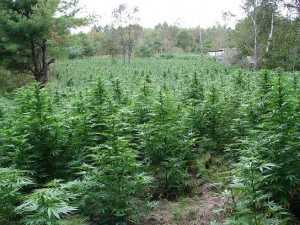
Soil
Look for soil with a pH of 6.5 and compacts when you squeeze it but breaks apart easily in your hand. Be prepared to make amendments to your soil the autumn/fall before planting your weed. You should use vermiculate to increase water retention and perlite to increase drainage and oxygen. A good soil mix will make all the difference when it’s time to harvest. Use our mediums guide for advice on soil.
Guerrilla grow watering
If the amount of rain water isn’t sufficient to support your plants life cycle, make sure that you give it extra water. 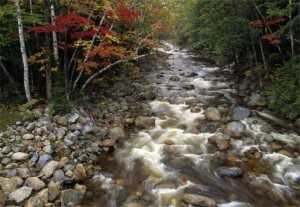
Grow tip: Keep any containers for transporting water well hidden near your guerrilla growing site. Plan ahead; transport your equipment a couple of pieces at a time.
Nutrients
In general, the soil at your guerrilla growing location is unlikely to contain all the food your marijuana plant needs to flourish. Fertilizers like manure, blood meal, bone meal and worm castings are excellent sources of nutrients for your plants. These organic nutrients are preferable as they invite bugs that eat and process them for your plant. Use fertilizers with more nitrogen in vegetative growth and more phosphorous when your plants are flowering. For more detailed information, use our guides on Nutrients and Mediums for more detailed info.
How often should you visit your guerrilla grow site?
Try to keep visits to a minimum as the more you visit, the greater the chances of being caught. Beginners will be tempted to visit with every little change in weather conditions. Remember weed is a hardy plant so good planning and picking a suitable strain increase the chances of a successful grow.
Grow tip: Make sure you visit the grow in mid July as this is when your plants will start to show their flowers and sex. Remove and destroy males away from your growing location immediately!
Picking a strain for guerrilla growing
Pick a hardy strain that needs less attention and grows well in your chosen climate. Make sure that seasons are long enough, and your plant has enough time to flower. In colder northern climates, an Indica like The Cheese grows well and has a short flowering time. If you have long, hot summers, a Sativa like Jack Herer, which has a longer flowering time but doesn’t need a lot of attention, would be ideal. Use the outdoor strains guide to help you make an informed decision.
When should you harvest your guerrilla grow?
It might sound stupid, but harvest your plants when they are ready, making sure you do it before the cold, damp weather sets in. Leave it too late and you run the risk of wasting all the time, effort, and planning you’ve put in. Generally, when purchasing the strain you intend to grow, breeders provide guidelines on how long the plant takes to grow and ideal harvest months when specifically for outdoor growers
Avoid running into hunters, hikers, and policeman by harvesting at night.
Grow Tip: Take a sharp knife and a back pack to remove the weed discreetly, wrapping any different strains you’re growing in newspaper to keep them separate.
The dangers of Guerrilla growing
Apart from your weed being discovered by the police or stolen, the wild can pose unexpected dangers that are a threat to your plants.
– Local Wildlife – Wild animals love to eat marijuana plants. You can deter them with bear, fox, or even human hair and blood.
– Frost – Frost can kill plants, so make sure you pick a strain that will complete its life cycle between the last and first frosts. Be ready to harvest if frosts come early.
– Drought – A lot can be done to avoid damage from drought. Make sure you have a decent loamy soil and that water is supplied regularly. Sativa root systems grow deeper so have better drought resistance. Keep a close eye on signs of dehydration.
Guerrilla growing can be a demanding, difficult and dangerous way of growing your marijuana. Ensuring you take care and follow the steps outlined above should make it that little bit easier. Guerrilla growing isn’t for the none daring, but the rewards can be worth the effort.




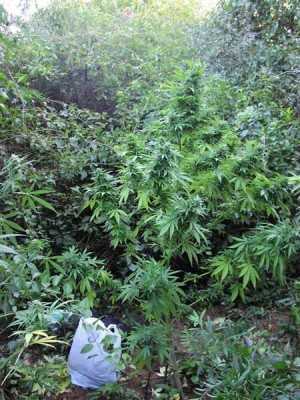
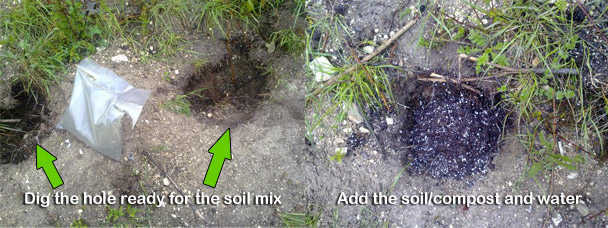
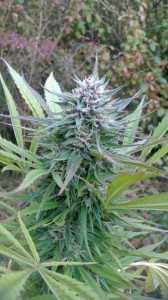
How about being a: good neighbor, steward to forest parks and growing on YOUR OWN property. Oh, you don’t have property to call your own? Tough luck, get a job, borrow from your parents, wait for your rich relative to pass on, I don’t care! What I care about are those folks who grow responsibly and understand the of laws of: trespassing, waterway damage, animal habitat, plant/tree growth and yes, your neighbors pets. So before your camo covered butt gets to learn what an arresting officer looks like, dipping your precious pinkies in ink and learning Brutus is your cell mate, be RESPONSIBLE.
Digging is the hard part, especially where I live. The soil is rocky and requires a pick axe. I now grow in large burlap sacks and get good yields. I blend lots of hydration crystals into the soil mix to keep it moist enough.
great article , easy to follow
Used to do this way back when ,I guess I grew old
used to do this many years ago ,suberbea closed in on me.
know the local laws on how many plants will get you prison time in Illinois 5 is the max for not going to mandatory jail, just a fine and felony. just in case you do get caught with your hands on the buds.
This article makes me want to try it out! I live out in the woods already so it shouldn’t be hard to find a spot I would think.
i do not any wooded area for me to grow in but have a big garden and in my 25 tomato plants i grow 25 or so auto’s this is my 5th year and if you were not sending right up on them you would never see them.Just a thought for a urban guerrilla grow.
I have tried this many times and it works fairly well…buy a folding military type shovel to carry in your back pack to dig a depressed area (4-5 ft diameter and a foot or so deep) and use the top soil…spread the other dirt around evenly outside the grow area so it’s not noticeable. I have found that rain water will stay in the depressed area longer and might deter some animals as well as weeds. Being a foot or 2 lower may be the difference of someone spotting your grow or not. Another thing is piss or poop around your grow to deter deer and other animals. Stop by a barber shop and ask if you can have the hair cuttings and spread around evenly in your grow area.
for water employ a Hydraulic Ram Pump , it works on its own with no electric .
Good advice